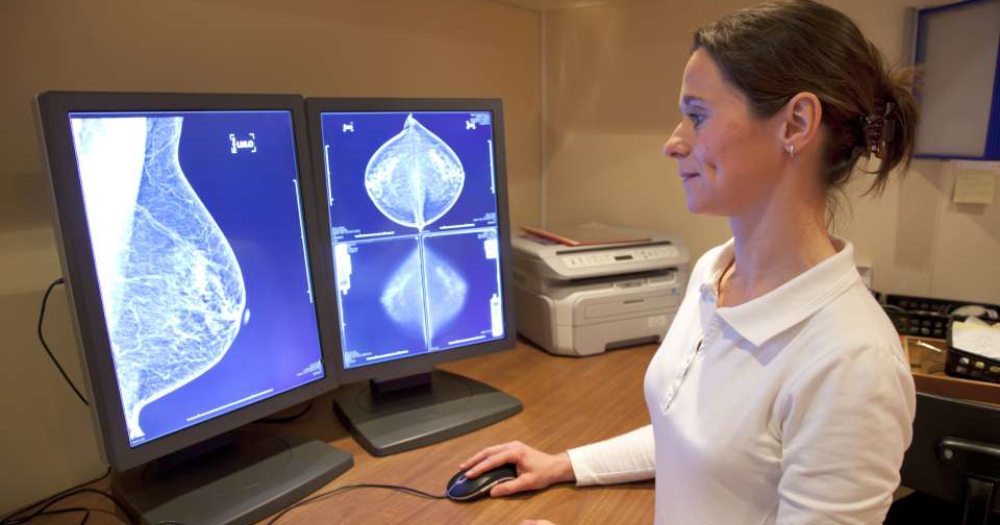Study: AI could help improve early detection of interval breast cancers

Cancer doesn't wait, and it doesn't care about calendars or routine check-ups. That's what makes interval breast cancers — the ones that sneak in between regular mammograms — so dangerous. But now, a team of researchers at UCLA has found a glimmer of hope hiding in the wires and code of artificial intelligence.
In a study published in the Journal of the National Cancer Institute, they discovered that AI could flag nearly 3 out of 4 of these sneaky cancers before they grow teeth.
"For patients, catching cancer early can make all the difference," said Dr. Tiffany Yu, who led the study. And she's right — earlier means easier to treat, less invasive, and a better shot at walking away with your life.
How does it work?
Here's the gist: AI gets fed a huge stack of past mammograms, including ones from women who were later diagnosed with interval breast cancers. Then it plays detective.
- The software, called Transpara, scores each mammogram from 1 to 10, based on how suspicious it looks.
- A score of 8 or higher? That's a red flag. The kind that says: "Hey doc, take a second look."
And the results are pretty eye-opening:
- 76% of "normal" mammograms — the kind that slipped by radiologists — were flagged by the AI.
- 90% of the ones that had visible signs but were missed by human eyes? AI nailed them.
- Even for the really subtle cases, it caught between 72% and 89%.
But AI isn't clairvoyant. When it came to cancers that were completely invisible (the so-called "occult" ones), it flagged 69% — but only correctly marked the actual tumor spot 22% of the time. So yes, it can see something's off, but it doesn't always know where to point.
Why does it matter?
Because timing is everything in cancer care. These interval breast cancers grow quietly in the shadows between annual screenings, and by the time they're spotted, they're often further along and tougher to treat.
Dr. Yu says it plainly: "It can lead to less aggressive treatment and improve the chances of a better outcome." That's huge. It's not just about surviving. It's about how you survive — with fewer surgeries, less chemo, more dignity.
And then there's the trust factor. No one wants to walk out of a routine mammogram thinking they're in the clear — only to find out months later that something was missed. AI, even with its flaws, could be the backup humans need. A second set of eyes that never tires, never blinks.
The context
AI in breast cancer screening isn't totally new — Europe's been dabbling in it for a while. But the U.S. does things differently. Here, most mammograms use 3D imaging and women get checked every year. In Europe, it's mostly 2D and every 2-3 years. That changes the game.
This UCLA study looked back at nearly 185,000 mammograms spanning almost a decade. It examined 148 women who were later diagnosed with interval cancers and asked: could the cancer have been spotted sooner? Turns out, in many cases — yes.
But here's the kicker: AI still fumbles. "We uncovered a lot of AI inaccuracy," admitted Dr. Hannah Milch, one of the study's senior authors. And when the tool flagged something invisible to humans, it was right on the general suspicion — but not great at pinpointing the exact trouble spot.
So we're not handing over the reins just yet. But as a sidekick? A watchful ally? AI might just be what radiologists need to tip the odds in their — and patients' — favor.
As Dr. Yu put it, "This is about giving radiologists better tools and giving patients the best chance at catching cancer early." And maybe, just maybe, saving more lives in the process.
💡Did you know?
You can take your DHArab experience to the next level with our Premium Membership.👉 Click here to learn more
🛠️Featured tool
 Easy-Peasy
Easy-Peasy
An all-in-one AI tool offering the ability to build no-code AI Bots, create articles & social media posts, convert text into natural speech in 40+ languages, create and edit images, generate videos, and more.
👉 Click here to learn more


